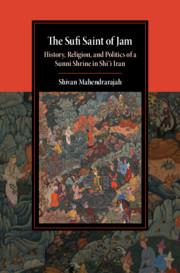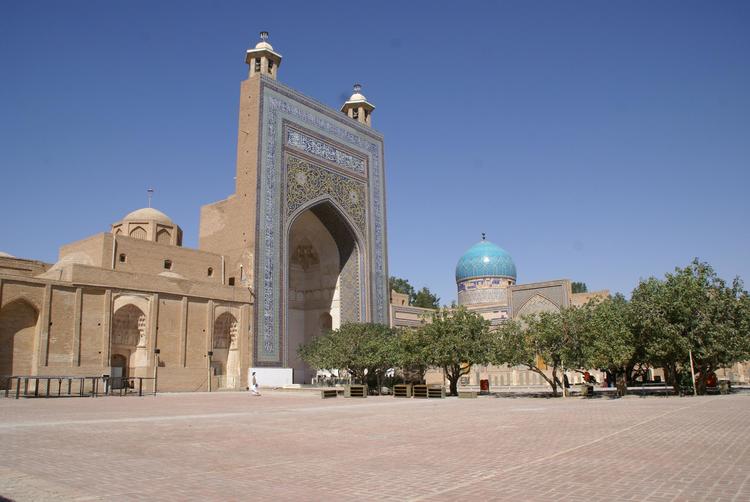St. Andrews (Special to Informed Comment) – The government of the Islamic Republic of Iran is often depicted by its enemies and their press (the United States, Saudi Arabia and Israel in particular) as an ideological and sectarian Shiite state, drunk on fundamentalism. Religious fundamentalism, however, is a key part of the politics of these critics of Iran, as well. Contrary to this image, Iran’s government has often adopted pragmatic policies that are the opposite of sectarian. This pragmatism can be seen in its treatment of the Sunni population of eastern Iran, where the Islamic Republic does not impose anti-Sunni policies. The opposite. Tehran’s objective is to “pacify” Sunnis by showering them with “love”: tangible and intangible benefits. Since my archival and field research focused on Khurasan, my comments are confined to the east. Iran’s policies toward Iranian Sunnis of the Persian Gulf, and Iran’s Arab and Kurdish west, still need more research.
I carried out my research on the educational and charitable shrine-complex of the great Sufi saint Ahmad-i Jam (d. 1141 AD) at Turbat-i Jam. The fruit of this research is my new book,
The Sufi Saint of Jam: History, Religion, and Politics of a Sunni Shrine in Shiʿi Iran. (Cambridge University Press, 2021). Click here .
The question I asked myself when I first visited Jam is “why has this shrine survived while other Sufi shrines in the Islamic world have gone to ruin?” I have visited numerous Islamic institutions (viz., mausolea and mosques) from India to Morocco that had been popular and prominent in pre-modern times; many had since slid into disrepair. Saint cults and Sufi praxis had withered or evaporated. For example, the tomb of Naqshbandi shaykh, Abu Nasr Parsa (Balkh), and shrine of the Hanbali Shaykh al-Islam of Herat, ʿAbdallah Ansari, were in ruins (both have since been renovated by Aga Khan charities). Ahmad-i Jam’s shrine was in poor shape as reflected in photographs taken in 1934 by Robert Byron (Road to Oxiana); and 1977 by the eminent archaeologist, Warwick Ball. Yet at Turbat-i Jam stands an indubitably Sunni shrine in a Sunni-majority city. Shrine-complex, saint/relic cult, and Jami mystical (Sufi) community were prospering in Shiʿi-majority Iran.
The saint’s tumulus is located before the arch (iwan) and shaded by a pistachio tree. Photo © 2021 Shivan Mahendrarajah.
Ahmad-i Jam’s shrine burgeoned from a hospice (khanaqah) teaching the Islamic Sciences (ʿulum al-din), to a sprawling complex of spiritual, sepulchral, and educational buildings: colleges, hospices, mosques, domes, museum, library, offices, and gardens. The architectural ensemble reflects diverse designs, from the Mongol age to the modern. The shrine’s eclectic architectural ensemble was refurbished under the aegis of Iran’s Cultural Heritage Organization (Sazman-i miras-i farhangi). The shrine has two thriving seminaries (hawza, madrasa), one for males and one for females.
How does Ahmad-i Jam’s refurbished shrine-complex reflect on the proffer above, the alleged sectarianism of the Shiʿi regime?
One reason for the shrine’s sparkle is that the Islamic Republic views Sunni spiritual and sepulchral edifices as integral components of Iran’s national heritages. I have traveled throughout Iran and visited sacred sites of every major Iranian faith. Each site is photographed and logged. Pre-Islamic and Islamic sites, including the twenty-four accepted and fifty-seven tentative UNESCO World Heritage sites are preserved by Miras-i farhangi. This includes the tomb for Judaism’s Esther and Mordecai in Hamadan; Roman Catholic and Armenian monasteries and churches; and the renowned Zoroastrian fire-temple in Yazd.
Refurbishments to shrines, mosques, churches, fire-temples, and synagogues do not involve just the dispensation of public funds by the Iranian government. Technical expertise provided by Miras-i farhangi—architects, engineers, craftsman, artisans—is the sine qua non for the restoration of heritage buildings. Hence the criticality of the state’s active support for cultural preservation.
Other reasons for the Islamic Republic’s initiatives to appease Iran’s eastern Sunnis stem in part from covert operations by its enemies.
Firstly, Baluch nationalistic movements in Sistan & Baluchistan Province created serious social and political problems for the governments of Iran and Pakistan since before the 1979 Iranian Revolution. Sunni institutions in Zahedan (viz., libraries and seminaries) have been funded lavishly by Tehran.
Secondly, as Shireen Hunter observed, the United States “opted for regime change [in Iran] through destabilization and began, among other things, encouraging Iran’s ethnic and religious minorities, especially in Kurdistan, Sistan, and Baluchistan, to rebel against Tehran. In this effort, the United States was supported by Saudi Arabia and Pakistan.” The Iranian government attempts to counter Wahhabi and CIA instigation by dispensing public funds to Sunni communities; for example, by sponsoring libraries and madrasas, and restoring cultural buildings. The state tries not to interfere with local religious practices. The Sunni prayer leader (imam-jumaʿ) of Jam is the chief of Ahmad’s shrine. Jam’s Shiʿa minority have their own imam-jumaʿ or leader of Friday prayers.
Thirdly, by promoting and funding Sunni seminaries within Iran, and integrating them with the Islamic Republic’s educational bureaucracies, Tehran retains oversight of curricula. This is clever and pragmatic: if Iranian Sunnis travel overseas to secure training in Islamic Studies, they will be corrupted by Wahhabism or subverted by Tehran’s enemies and returned to Iran to create mischief. At interviews at Jam, Sunnis expressed satisfaction that Iranian Sunnis were not among the “foreign fighters” of ISIS.
I analyzed the 2017–18 curriculum at Hawza-yi ʿilmiyya Ahmadiyya, the Jami seminary for boys; and compared it to the curriculum taught at the shrine in the Timurid period. The contemporary program is within the mainstream of Sunni pedagogy.
In sum, the Islamic Republic of Iran employs nationalistic and pragmatic approaches toward its Sunnis. Iranians (not just state officials) are justifiably proud of Iran’s multi-confessionalism and its lively cultural mosaic. Renovating Ahmad-i Jam’s shrine is as logical as preserving a Zoroastrian fire-temple or Shiʿi mosque. The Islamic Republic can doubtless be sectarian when it benefits Tehran’s agenda, but it has put the emphasis on pragmatism in dealing with its Sunnis in the east.
Twitter: @S_Mahendrarajah





 © 2025 All Rights Reserved
© 2025 All Rights Reserved